Look at the history of any ecommerce brand that has emerged in the past few years.
Most likely, you’ll see that their journey began by first selling on Amazon and other marketplaces.
And for good reason. Amazon is a huge marketplace, connecting sellers with millions of potential customers.
So, whether you’re just starting out or looking to expand your existing business, understanding how ecommerce with Amazon works could create new opportunities for you.
In this guide, we’ll explore the basics, from setting up your seller account to understanding product listings and fulfillment options, giving you a solid foundation for navigating the world of Amazon selling.
Disclaimer: If you buy any products through links on this site, I may earn a commission. But it doesn't make any difference to your cost, and it helps me keep this blog running. So you could always read my articles for free.
How Amazon ecommerce works
Amazon is a marketplace where any legitimate business can sell products to prospective customers.
To become an Amazon seller, you start by creating a seller account. You’ll can decide between an Individual and Professional selling plan.
Individual is good for beginners to sell on Amazon, while Professional unlocks more features like bulk listings and advanced reporting.
This is where your partnership with Amazon begins, as they provide the platform in exchange for a cut of your sales.
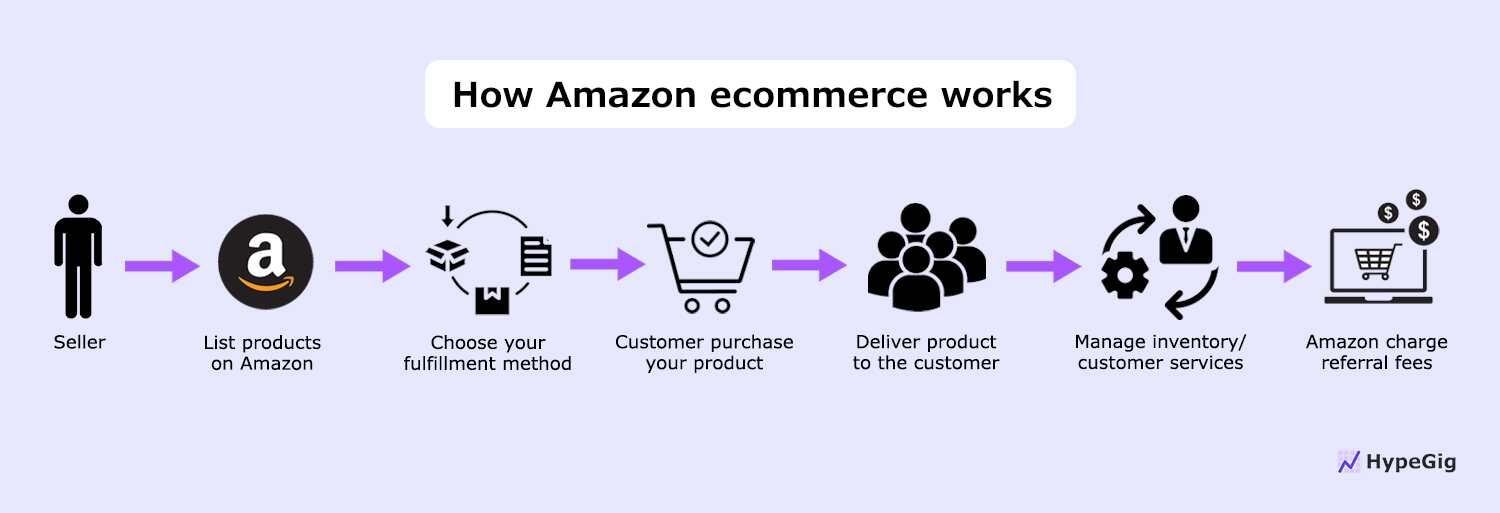
Next, you list your products. This involves creating product pages with descriptions, images, and pricing.
Let’s say you’re selling handmade jewelry. You’d need clear photos showcasing your designs and compelling descriptions highlighting the materials and craftsmanship.
Keywords are crucial here. If someone searches “sterling silver earrings,” your listing needs to include those terms to appear in the results. Amazon benefits from each listing, as more products attract more customers to their site.
Then comes fulfillment – how you get products to customers. You can handle it yourself (Fulfillment by Merchant or FBM), packing and shipping orders. Or, you can use Fulfillment by Amazon (FBA).
With FBA, you send your inventory to Amazon’s warehouses, and they handle storage, packing, shipping, and even customer service for those orders.
FBA can be a game-changer, especially as your business grows. For this service, Amazon charges FBA fees, adding to their revenue stream.
Finally, you manage your business. This includes tracking sales, managing inventory, and handling customer inquiries. Amazon provides tools to help you with this, from sales reports to customer communication systems.
Throughout this process, Amazon earns a percentage of each sale, known as a referral fee. This fee, along with other potential fees like FBA fees, is how Amazon profits from facilitating sales on their platform.
Amazon ecommerce is an ongoing process of optimizing your listings, pricing competitively, and providing great customer service to succeed in the bustling Amazon marketplace, a marketplace that exists because of the mutual benefit between sellers and Amazon.
The pros and cons of selling on Amazon
Selling on Amazon can be a powerful way to grow your business, but it’s not a magic bullet. Like anything, it has its ups and downs. Let’s explore the pros and cons to help you decide if you should become an Amazon seller.

Advantages of being an Amazon seller
Massive audience reach
One of the biggest advantages of ecommerce with Amazon is the sheer volume of potential customers. Amazon boasts millions of active users, providing unparalleled reach.
Imagine you’re selling handmade soaps. Setting up shop on your own website might attract a few hundred visitors a month, but listing your soaps to sell on Amazon exposes them to a massive audience searching for products just like yours. This built-in traffic can significantly boost your sales potential.
Established trust and credibility
Amazon has cultivated a strong reputation for reliability. Customers generally trust the platform, which can translate to increased trust in sellers. This is especially helpful for new businesses.
Think about it: a customer might hesitate to buy from a brand-new website they’ve never heard of, but they’re more likely to purchase the same product on Amazon because of the platform’s established credibility.
Streamlined fulfillment with FBA
Fulfillment by Amazon (FBA) can be a game-changer. As mentioned before, you send your inventory to Amazon’s warehouses, and they handle the rest.
This way, ecommerce with Amazon frees you up from the hassle of packing and shipping orders, allowing you to focus on other aspects of your business, like product development or marketing.
Powerful marketing and advertising tools
Amazon offers a range of advertising options, from sponsored product listings to display ads, allowing you to target specific customer segments. These tools can be very effective for increasing product visibility and driving sales.
However, they can also be complex to navigate, and it’s essential to understand how to use them effectively to avoid wasting your advertising budget.
Limitations of ecommerce with Amazon
Competitive landscape
Now, let’s look at the downsides. The sheer number of sellers on Amazon creates intense competition.
It can be challenging to stand out from the crowd, especially if you’re selling a product that’s already offered by many other vendors. This often leads to price wars, which can squeeze your profit margins.
Fees and costs
Ecommerce with Amazon involves various fees, including referral fees, FBA fees (if you use the service), and other potential costs like storage fees.
These fees can eat into your profits, so it’s crucial to factor them into your pricing strategy when you become an Amazon seller.
Dependence on Amazon
When you sell on Amazon, you’re essentially relying on their platform. They control the rules, and they can change them at any time. This can be a risk, as your business becomes somewhat dependent on Amazon’s policies.
For example, changes to their search algorithm could impact your product visibility, even if you’ve done everything “right.”
Customer ownership
One challenge of ecommerce with Amazon is that you don’t directly own the customer relationship. Amazon handles the transactions and customer communication, which can make it harder to build a loyal customer base that interacts directly with your brand.
This is something to consider if building a strong brand identity and direct customer relationships is a priority for your business.
How to become an Amazon seller
Selling on Amazon presents both significant opportunities and challenges. The massive reach and established trust are huge advantages, but you should have a plan to stand out from the competition. Let’s see how to proceed.
Pick a niche
Finding the right niche is crucial for the success of your Amazon ecommerce business. A niche focuses your efforts and reduces competition. For example, instead of “clothing,” consider “organic baby clothes.” This targets a specific customer.
I’ve seen sellers thrive by focusing on niches like “vegan cookbooks” or “ergonomic office chairs.”
Look for underserved markets. Ask yourself: What are people searching for that isn’t readily available? Analyze competitor listings on Amazon. Are they saturated? Can you offer something unique?
You can research trends and high-demand products using tools like Google Trends, Helium 10, or AMZScout.

Start by brainstorming a few niche ideas, then validate them with research. Don’t rush this step—it’s the foundation of your Amazon ecommerce business.
Identify your product line
Product selection can make or break your success. The key is finding items with high demand but manageable competition.
I recommend focusing on products that solve specific problems and sell for $20-50 – this price range typically offers good profit margins while keeping startup costs reasonable.
So, how do you find a strong product line to sell on Amazon?
Start by using tools like Jungle Scout or Helium 10 to analyze sales data. Look for products generating at least 300 monthly sales with Best Seller Rankings under 5,000 in their category.
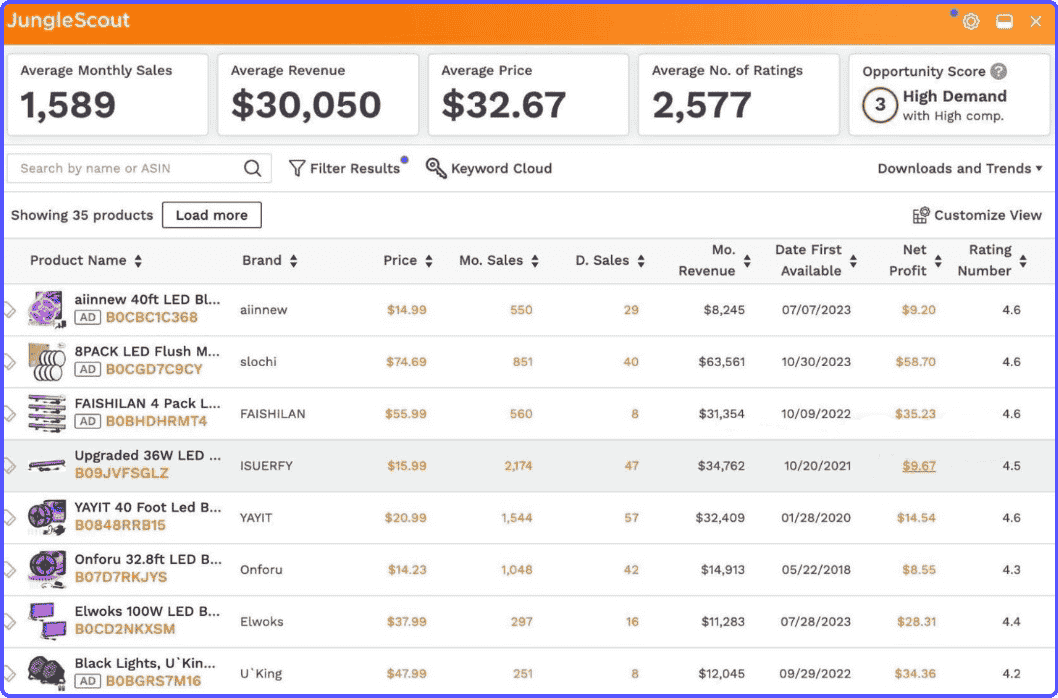
For example, when I discovered silicone baking mats were trending, I found most competitors had fewer than 200 reviews, suggesting room for new sellers.
Search “best sellers” in your interested category, and check top listings’ monthly sales and reviews. Then, use Amazon’s FBA calculator to estimate profits.
For more information, check out this guide on finding products for ecommerce with Amazon.
Define your unique value proposition
A compelling unique value proposition (UVP) is crucial for standing out among millions of products.
Your UVP should clearly communicate why customers should choose your product over competitors.
Think about specific pain points you’re solving or improvements you’re offering.
For instance, when a client launched his bamboo cutting board to sell on Amazon, I noticed competitors weren’t addressing food safety concerns.
So we developed a board with built-in juice grooves and antimicrobial properties, then highlighted these features in my product title and first three bullet points. This approach helped reach $10,000 in monthly sales within three months.
To create your UVP, examine your target market’s top complaints using review analysis tools like Helium 10’s Review Insights.
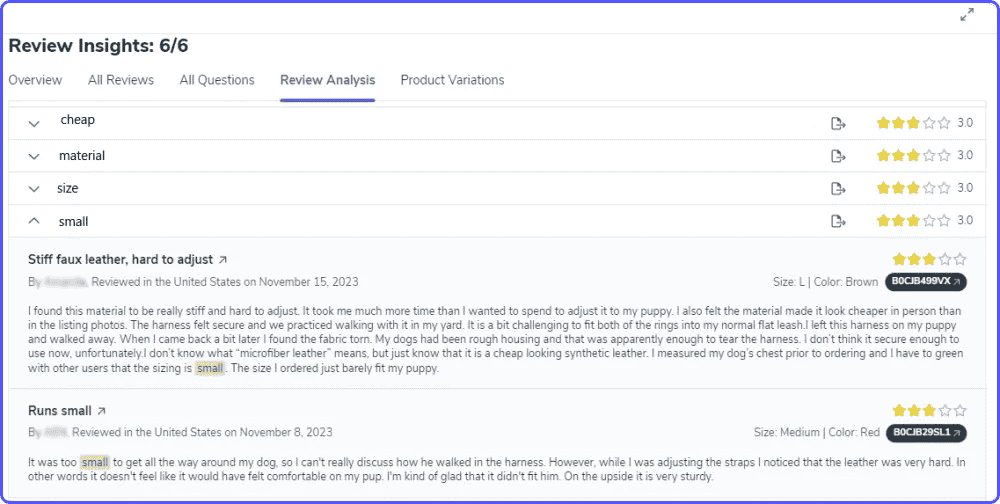
Focus on recurring issues, then develop solutions. Test your messaging with friends and in small social media groups before finalizing your Amazon listing copy.
Source a small quantity
Effective product sourcing can significantly impact your profit margins. Through trial and error with suppliers across Asia and North America, I’ve discovered that reliable sourcing goes beyond just finding the lowest price.
While running a yoga mat business that involves ecommerce with Amazon, I initially chose a supplier offering mats at $4 each. However, quality issues led me to switch to a manufacturer charging $6.50 per unit but delivering consistent quality and reliable shipping times.
This decision actually increased profits as better quality led to fewer returns and more positive reviews.
To find suppliers, don’t start with websites like Alibaba and Global Sources right away. These platforms are useful when you want to order products in bulk.
But when you’re just beginning to sell on Amazon, you just want to test what sells and what doesn’t with small quantities. And you want to get it fast.
So, look for options closer to home. These include local manufacturers, wholesale markets, and thrift stores. You can find them using Google or directories like Thomasnet.
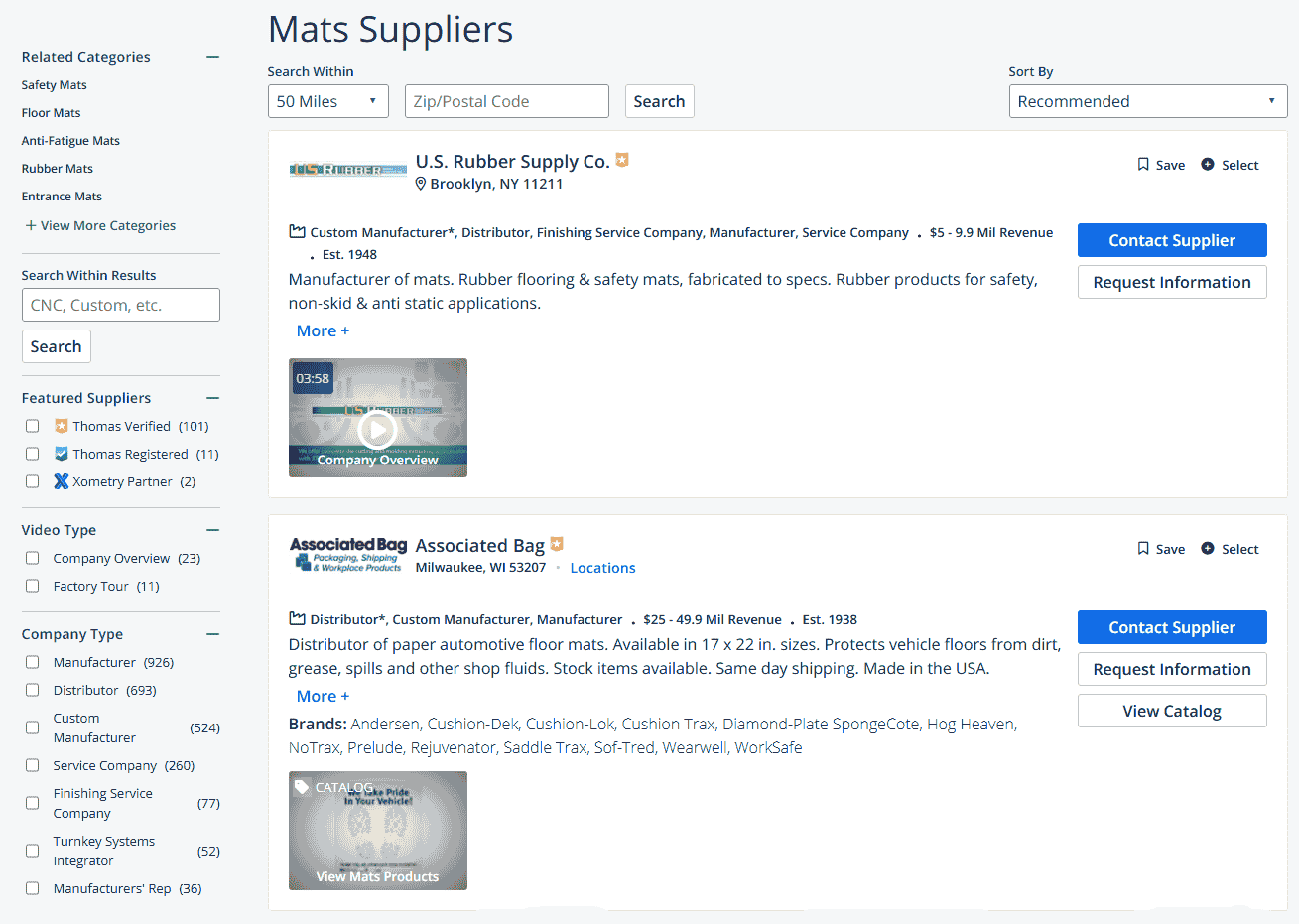
This way, you are also less likely to get scammed. Because you can talk to wholesalers in person, communicate in your native language, and verify that they have a real physical infrastructure.
Request samples from at least three suppliers, comparing factors like material quality and communication responsiveness.
For further details, take a look at this guide on how to source products for your Amazon business.
Register as an Amazon seller
Registering to become an Amazon seller is straightforward but detail-intensive. You’ll need to choose between an Individual account (pay-per-sale) or Professional account ($39.99 monthly).
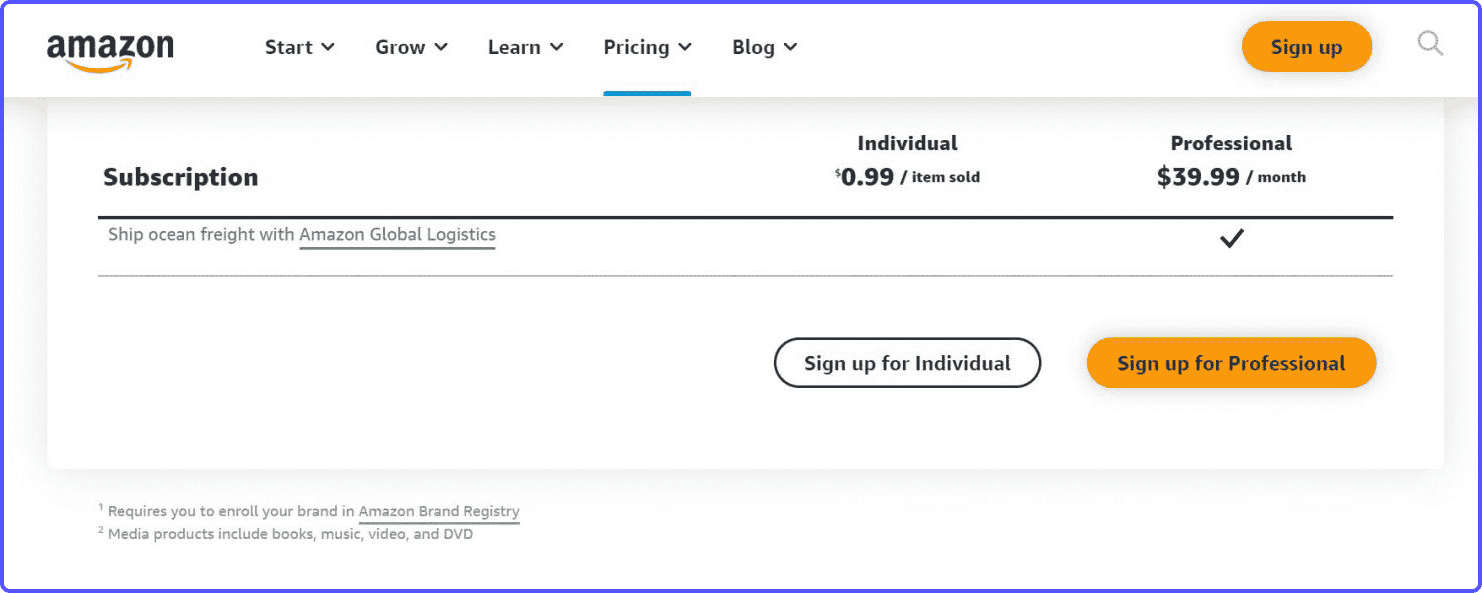
For most sellers planning to move more than 40 units monthly, the Professional account makes more financial sense.
Based on my experience setting up three different seller accounts, gather these essentials before starting: government-issued ID, tax information, bank account details, and credit card for verification. You’ll also need a business email address.
The registration process typically takes 24-72 hours for approval before you can start selling on Amazon. During this time, prepare your business documentation like EIN or SSN, and consider setting up Amazon’s two-step verification for security.
For more information, check out this guide on creating a seller account on Amazon.
Figure out order fulfillment
What’s your plan to store and ship products to buyers? Choosing the right fulfillment method is crucial for profitability.
In Amazon ecommerce, you have two main options: Fulfillment by Amazon (FBA) or self-fulfillment (FBM). The former means that your products will be stored and delivered by Amazon at an extra cost to you.
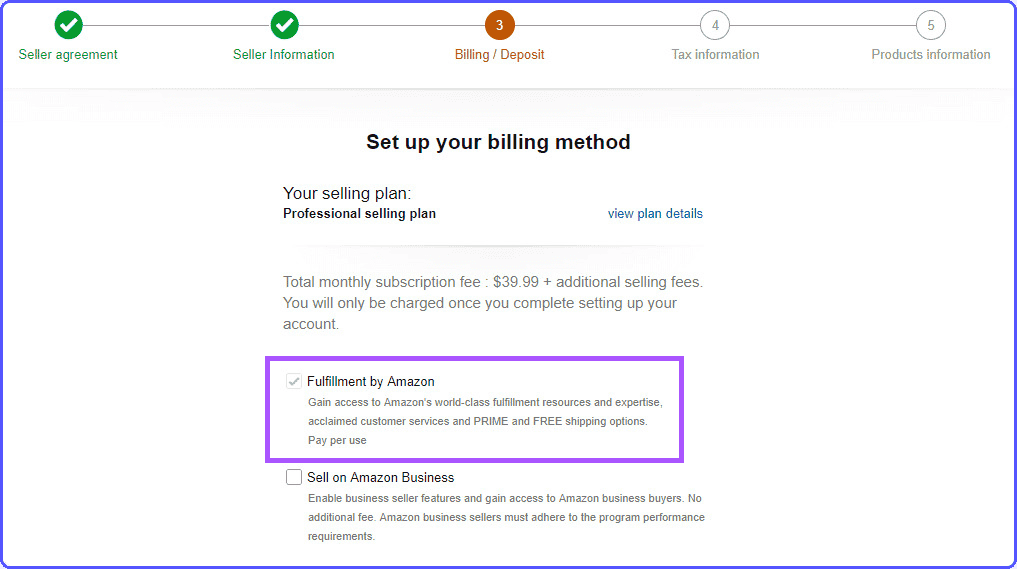
When you’re just starting to sell on Amazon, you may think of choosing FBM to save money. But I think you’ll quickly realize that it’s a drag to handle 30+ daily orders from your garage.
FBA has a cost, but it’ll free up crucial time that you can spend on other important activities, such as marketing. Plus, FBA products typically get better visibility and qualify for Prime shipping.
For new sellers, I recommend starting with FBA for items under 2 pounds and priced above $15. Use Amazon’s FBA calculator to estimate fees, factor in seasonal storage costs, and maintain a 30-day inventory turnover to optimize storage fees.
For more details, take a look at this comparison between FBA and FBM.
Create product listings
A product listing is your virtual storefront on Amazon, consisting of both visual and text elements that help customers understand and buy your product.
Each listing includes several key components: up to 9 product images, a title, 5-6 bullet points highlighting key features, a detailed product description, and backend search terms.
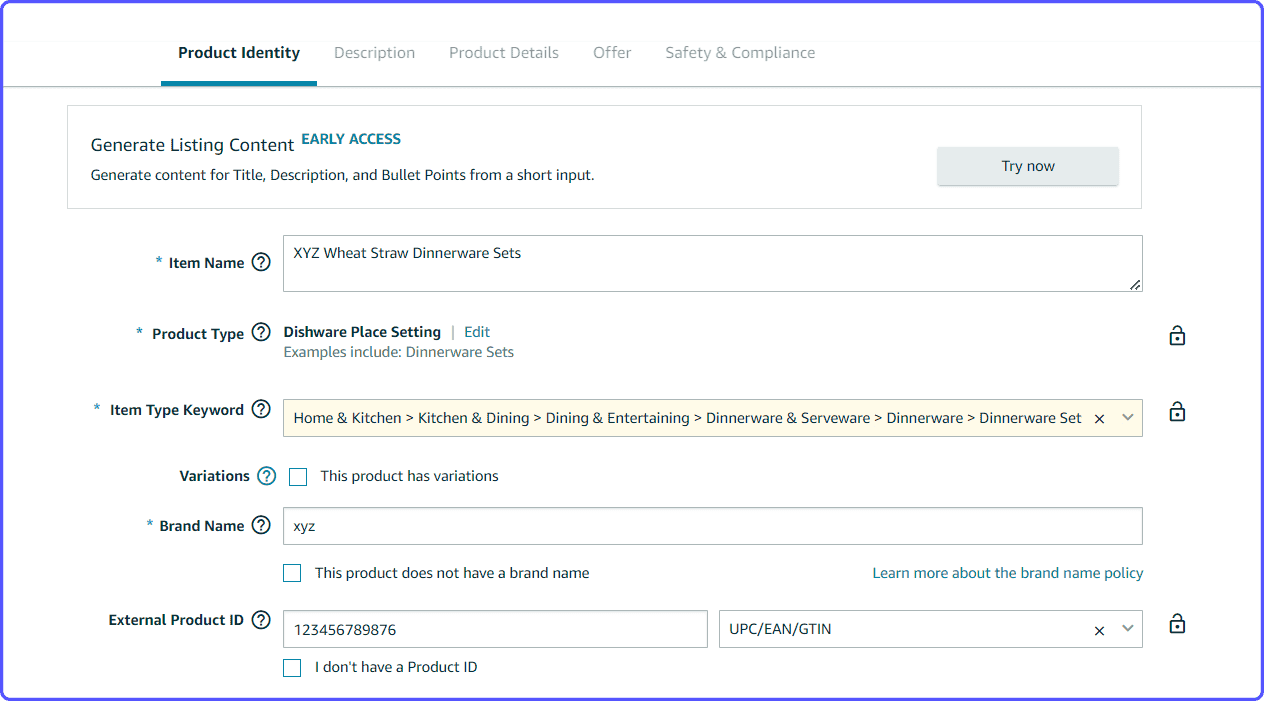
For images, you need a main photo showing your product alone on pure white background (Amazon requirement), plus lifestyle shots showing the product in use, size reference images, and detail shots highlighting key features.
Your title should front-load important keywords while staying readable. Structure bullet points to highlight benefits first, then features.
To create high-converting listings for ecommerce with Amazon, research competitor keywords using Helium 10’s Cerebro tool, invest in professional photography or learn proper lighting techniques, and write benefit-focused descriptions.
Price your products
When pricing your products to sell on Amazon, begin by researching competitors’ prices to understand the market standards.
For instance, if you’re selling Bluetooth earbuds like the JBL Tune 245NC, take a look at their current pricing on Amazon to see where you stand.
Consider all your costs, including production, shipping, and Amazon’s fees. Your selling price should cover these costs and leave room for profit. Use tools like Amazon’s pricing calculator to determine the optimal price point.
For beginners, the “cost-plus” approach is straightforward: add a markup to your total costs. For example, if your total costs amount to $20, a 50% markup would set your selling price at $30.
Regularly monitor and adjust your prices based on market trends and customer demand. Tools like Keepa can help you track price history and set competitive prices when you become an Amazon seller. Pricing is dynamic—test and tweak to find what works best for you.
To learn more, read this guide on how to create an effective pricing strategy for ecommerce with Amazon.
Promote your products
Promoting your Amazon listings is crucial for visibility and sales. Start by optimizing your product title, description, and keywords.
For instance, if you’re selling a “Magic Bullet Blender,” include relevant keywords like “compact blender” and “kitchen essentials.” High-quality images and detailed descriptions can significantly enhance your listing.
Next, leverage social media to drive traffic to your listings. Share your product on platforms like Instagram or Facebook, and consider collaborating with influencers who can review and promote your product.
If you’re not getting enough traction in the beginning, consider using Amazon’s advertising tools like Sponsored Products to boost visibility.
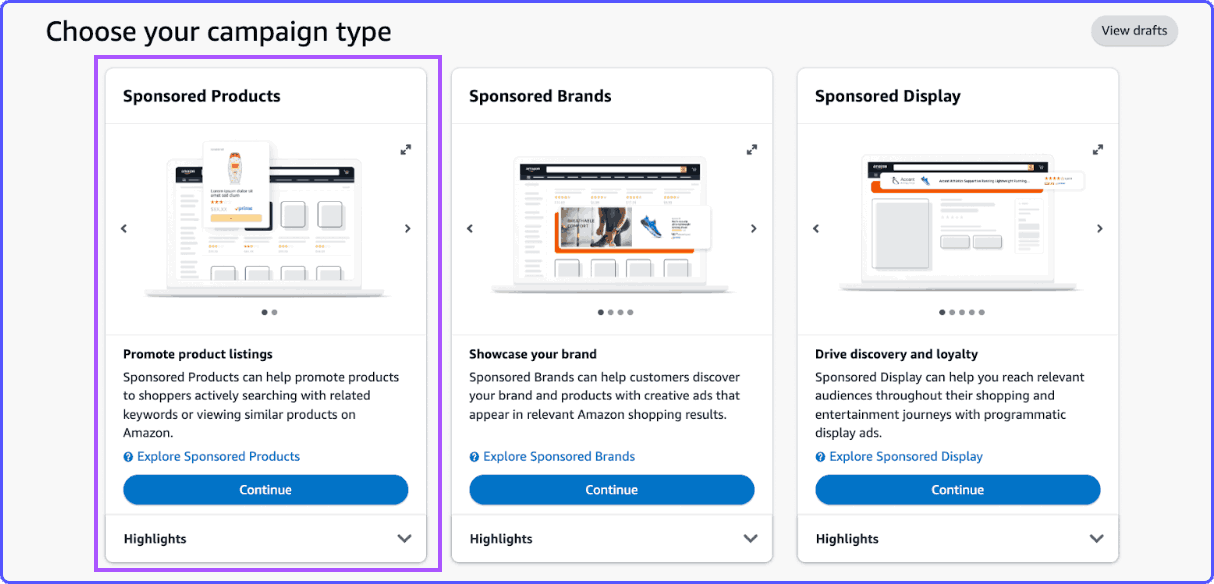
For a budget of around $10 per day, you can reach a broader audience and increase your chances of making sales.
Don’t forget to regularly monitor your listings and adjust your strategies based on performance.
By staying proactive and adaptable, you can effectively promote your Amazon listings and drive sales.
Final thoughts
Ecommerce with Amazon offers unparalleled opportunities. It provides a vast marketplace and reaches a global audience. You can start selling on Amazon with minimal investment.
Many beginners find success by utilizing Amazon’s tools and resources. For example, I recommend starting with Fulfillment by Amazon (FBA) to manage logistics.
Stay updated with market trends. Monitor your competitors. Regularly optimize your listings to stay ahead.
Remember, ecommerce is dynamic. Embrace changes and continuously learn. With patience and perseverance, you can achieve remarkable success on Amazon.
Did I miss anything? Did you try these tips on how to become an Amazon seller? Do you have any questions or comments? Share your thoughts below in the comments section.





